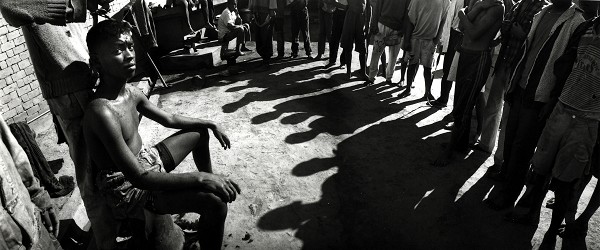
|
Rip Hopkins Antanimora boys prison © Rip Hopkins, 1996 Antananarivo's street children and their prisons Due to Madagascar's social structure and the disastrous state of it's economy (ranked amongst the world's poorest countries), more and more children have no choice but to live in the street. In Madagascar's capital 4000 children aged between 2 and 18 years old live in the street, surviving in gangs, groups of up to 30 children which replace the family structure. They subsist by doing small, menial jobs in the market place, by begging, stealing and by prostitution. Madagascar has two types of prisons, private and public. The public prisons are run and financed by the state. Here, the ex-prisoners who have finished their sentence can become wardens, they receive a salary and food, and in return they run and maintain order within the walls. Private prisons are often run by families, funded by the state, donations and the work performed by the children imprisoned there. The conditions are the same as in closed prisons, except that the Director decides whether the prisoner deserves to be freed, with the knowledge that in doing so he looses free labour and a portion of the money allocated to him by the state for the prisoner. In these centres, physical and psychological punishment are dealt out to those who disobey, which is a sufficient reason to runaway by any means ; more children run away than are let out. But the reprisals are severe for those who get caught : "They made us walk on our knees from the road to here, they threw big stones at us and then beat us with sticks and electric wires", explains Justin who tried to run away with two friends. Back Next |